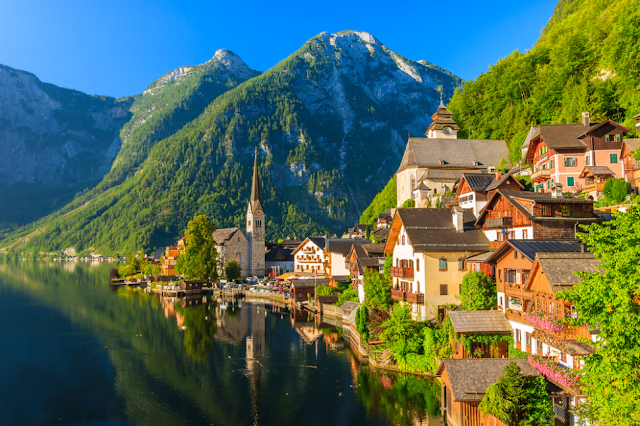Hallstatt in Austria are thought to be some of the most seasoned within the world
The salt mines within the slopes encompassing the town of Hallstatt in Austria are thought to be some of the most seasoned within the world. Salt was once the foundation of Hallstatt's economy, and nowadays the mines are a prevalent traveler fascination. In truth, this pleasant town draws in so numerous guests that it is considered a region of over-tourism. The town has looked for to constrain the number of individuals who can visit each day. Hallstatt's charms are so significant that an indistinguishable amusement of the town was built in Guangdong, China in 2011. So, if they can’t suit you at Hallstatt, maybe you'll be able visit China’s version.
In 1846, Johann Georg Ramsauer (1795–1874) found a huge ancient cemetery at the Salzberg mines close Hallstatt (47.561°N 13.642°E), which he exhumed amid the moment half of the 19th century. In the long run the uncovering would surrender 1,045 burials, in spite of the fact that no settlement has however been found. This may be secured by the afterward town, which has long involved the whole limit strip between the soak slopes and the lake. Some 1,300 burials have been found, counting around 2,000 people, with ladies and children but few infants.[7]: 26 Nor is there an "august" burial, as regularly found close expansive settlements. Instep, there are an expansive number of burials shifting significantly within the number and lavishness of the grave merchandise, but with a tall extent containing products recommending a life well over subsistence level.
An area of the Press Age Hallstatt salt workings the community at Hallstatt abused the salt mines within the zone, which had been worked from time to time since the Neolithic period, from the 8th to 5th centuries BC. The fashion and enrichment of the grave products found within the cemetery are exceptionally unmistakable, and artifacts made in this fashion are far reaching in Europe. Within the mine workings themselves, the salt has protected numerous natural materials such as materials, wood and calfskin, and numerous surrendered antiquities such as shoes, pieces of cloth, and instruments counting miner's rucksacks, have survived in great condition.[8]: 88 "Radio wire grip" Hallstatt 'D' swords, from Hallstatt Hallstatt A–B are portion of the Bronze Age Urnfield culture. Stage A saw Villanovan impact. In this period, individuals were incinerated and buried in straightforward graves. In stage B, tumulus (pushcart or kurgan) burial gets to be common, and incineration prevails. Small is known approximately this period in which the ordinary Celtic components have not however recognized themselves from the prior Villanova-culture. The "Hallstatt period" appropriate is confined to Hac and Had (8th to 5th centuries BC), comparing to the early European Press Age. Hallstatt lies within the range where the western and eastern zones of the Hallstatt culture meet, which is reflected within the finds from there.[9] Hallstatt D is succeeded by the La Tène culture.
















0 Comments